Preparation and Planning
First penned in 2013, most recently updated May 16, 2022…
As with many of you, Arnie and I have done a ton of traveling over the decades, and we have managed to dodge most travel hazards. Much of our success is due to years of experience, listening to others’ tales of woe, using good-old-fashioned common sense, trusting our gut instincts, and learning from our own war stories. In this blog, you will find comments from others who have shared their experiences with us.
Summer is a time when many people slip away to the sea or mountains, or perhaps on that well-deserved vacation to far-off places. But photographers such as Arnie and I travel year-round.
As noted above, many of you are also seasoned travelers, but hopefully in this series, you will pick up a hint or two or be reminded of things you knew and had let slip to the back of your brain.
PREPARATION
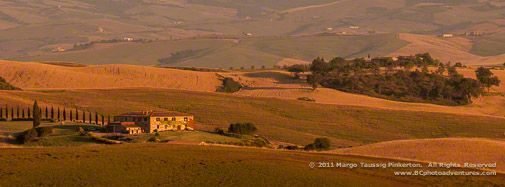
Guide Books
Guide books, let’s face it, are heavy, and with increasingly limited weight ceilings for baggage, especially in other countries, it makes sense to download your favorite guide book(s) onto your smart phone or tablet. You will have all the information at your finger tips, and you can bookmark pages as you work out your itinerary or wish list of things to do or see. When selecting a book or books, consider the type of travel you want to do. Some people like to travel with the crowd and go to all the popular spots.
I tend to wander off the beaten track, away from the madding crowd, so I prefer resources such as the Lonely Planet guides. They also have city guides and pocket-size translation/dictionary books. I have dozens of their books, many of them now on my iPad or even iPhone. If that doesn’t work for you, there are many other excellent guide books out there, so stop by your favorite bookstore and peruse the various offerings to see what works for you. This is not a place to scrimp. Your trip is worth it. You may want to indulge in one, two, or even three books. After all, you may not have the opportunity of returning to that destination, and you will want to get as much out of it as possible.
Remember, TripAdvisor is a great resource. Look at the overall reviews of a location, hotel, etc., ignoring one bad review in a sea of many really good ones or three excellent reviews out of a mere puddle of three or four.
Automobile Clubs and Maps
I have been a member of AAA (American Automobile Association) for decades and have taken advantage of the reciprocity it has with many clubs in other countries. I started out using AAA extensively in the 80s for affiliates in Europe, Australia, and New Zealand, and since those days, the organization has vastly expanded the numbers of clubs with which it enjoys some sort of reciprocity.
As a AAA Plus member, all my maps and books are included in my annual dues. When I go to the UK, for example, as long as I bring my card, I enjoy the same benefits. Check with your local club, however, as different countries offer different levels of reciprocity, and I am sure that from year to year, they change. I also take along the address of the club in the country/countries I am visiting, or I write ahead and ask for materials or sign in to their websites.
Many people will say, “Ah, but I have GPS.”
True, but it is really difficult to see the large, overall picture of an area on a Garmin or other GPS device. When Arnie and I travel within the US, we not only have HAL (our Garmin), but we have road atlases and maps that have been invaluable over the years when we want to explore a different area or take a different route for any number of reasons.
Overseas, we do the same. I have road atlases that are old friends, extensively marked with great places to stop, views, scenic byways, etc., as well as places and/or roads to avoid. For the UK, I have my ancient Ordnance Survey Motoring Atlas, now gone the way of the Dodo, but there are many good ones on the market these days. AA (The AAA affiliate in the UK) now offers a more discreetly sized Glovebox Atlas Britain.
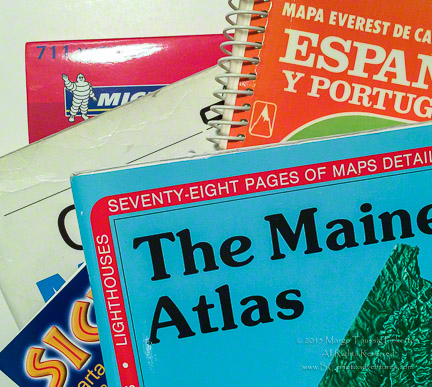
If you like exploring areas off the beaten path, I recommend looking for road atlases that are spiral bound and that have have great detail and show all those little roads and lanes. And if I cannot find one of those, I look for the same level of detail in regular road maps. Some great road atlas and map brands are AA, DeLorme (for the US and now owned by Garmin), and Michelin. There are certainly others, and for those who have some extra time in their travels, a trip to the local bookstore can often yield even better results.
And back to GPS units, we always take our own, even when flying. We note all our destinations in our Garmin, so getting a unit with the rental car or van does us no good. If you do have a GPS unit, be sure to update it before you head off. For those traveling overseas, the GPS takes a while to find the new satellites, so it probably is a good idea to find a place to establish a signal before getting onto the busy, open road as you leave the airport.
Car Rental (not to be confused with transportation on the road)
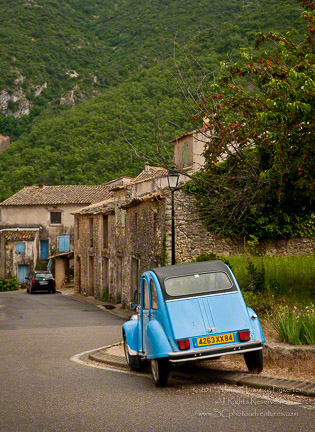 Renting a car can be an expensive proposition wherever you travel. Now, there are many web sites that offer comparison shopping. KAYAK is one that rises to the top of the search list. I often use Travelocity, as I like their customer service. Everyone has his or her preferences here.
Renting a car can be an expensive proposition wherever you travel. Now, there are many web sites that offer comparison shopping. KAYAK is one that rises to the top of the search list. I often use Travelocity, as I like their customer service. Everyone has his or her preferences here.
Overseas, consider as another resource SiXT that is a long-established company and offers great rates on car and van rentals.
I often seek local car-rental companies. They can often provide better deals, and some even pick you up! Our most recent rental was one I found through TripAdvisor. The reviews were excellent, and when I called the company on Skype, they could not have been nicer and more helpful. Not only could I find the vehicle I wanted, it was at a better price. I had been thwarted elsewhere.
It is always a good idea to book as soon as you know you are going to travel and need a rental car. Your choice may not be available, and who knows what you might be given or even if you could fit your luggage into it!
Airlines (not to be confused with transportation on the road)
Again, most of you take advantage of comparison websites to choose your airlines and airfare. Frequent Flyer aficionados can often get a great deal if they plan early enough. One other advantage of booking early is to select and actually have a good chance of getting the seats you want. Arnie always likes an aisle, while I choose a window. We try to reserve those, even if there is a seat between. It helps that we have different last names, so the airlines are not as inclined to be “helpful” and put us together. Even today, we are often lucky and have the in-between seat vacant, but that is never a guarantee.
These days, if there are connecting flights, it is probably wiser to allow yourself adequate time between flights in case your first one gets delayed. Arnie and I have made more than one mad dash to the next flight at the opposite end of the airport (always the case, it seems), wondering if we would actually make the connection. When we were active in the commercial world of photography, we often had no choice, as our clients had us tightly scheduled. Now, we try to be kinder to ourselves, although it isn’t often possible when trying to keep costs down.
BCPA alumna Mary gave this advice, “…We’ve learned the hard way that with a tight connection, we just might make the flight but our luggage won’t, so I always choose an itinerary with well over an hour between flights…” And here, I would prefer two hours when overseas.
She added, “Something else we do for long-haul trips is to pay for a more expensive coach seat and then use miles (saved up from credit card purchases as well as from actual flights) to upgrade to business class. It makes crossing the pond so much more comfortable, and you have lounge access for free!”
I also use an old-fashioned travel agent at times. Travel agents have not gone the way of the Dodo, and they can be particularly invaluable when you are already on the road and need something changed. Sharon Erickson of Cruise Planners (she does much more than cruises, so don’t be put off by the company name) used for years.
Travel Insurance
Travel insurance can be a really good investment. If you get sick, particuloarly in these days of Covid, or there are delays or cancellations beyond your control and not entirely covered by the airlines, or ships, or trains, etc., travel insurance may be your best friend. Many also offer evacuation insurance in case you have an emergency in some hard-to-reach location.
We highly recommend Allianz (pronounced AAL-ee-ONSE), and you can get various plans through Sharon above, one trip, or a year’s worth. One of the advantages of getting it through Sharon is that if you have a glitch while on the road, Sharon can help you navigate getting help.
SquareMouth, is one of the trusted reviewers in the industry. When you look at the SquareMouth ratings, also pay attention to the Outlook. There have been times when one of the companies with a Superior rating gets a Negative outlook!
SquareMouth is also a good resource for explaining the ins and outs of travel and cancellation insurances. Whichever company you choose, keep in mind that you should buy your insurance fairly soon after paying for the trip, sometimes in the 7-21-day range. But check with your provider to make sure of the time frame.
Make sure that the company you select offers insurance for your destinations! Sounds silly, but, for example, we used to visit Cuba each year, and not all companies offer trip/cancellation insurance there.
Mary had sage advice here, too, for those on Medicare, “And those of us on Medicare definitely need to get travel insurance if we leave the country–Medicare won’t cover you abroad.”
Passport
When traveling out of the country, it is always 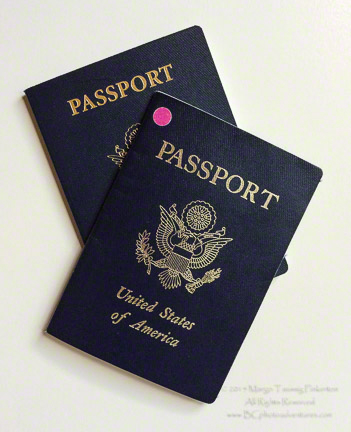 When traveling out of the country, it is always good to check eight to ten weeks ahead and make sure your passport is not going to expire at an inconvenient moment, i.e. just before your departure or during your time out of the country. Never cut it too close in case you get delayed in your travels. Most countries will not allow you in if your passport is due to expire within six months, so double check before leaving.
When traveling out of the country, it is always good to check eight to ten weeks ahead and make sure your passport is not going to expire at an inconvenient moment, i.e. just before your departure or during your time out of the country. Never cut it too close in case you get delayed in your travels. Most countries will not allow you in if your passport is due to expire within six months, so double check before leaving.
Remember, the Passport service can take four to six weeks to process your application, sometimes longer. We have been lucky and had our passports back in a shorter time, but that should be considered the exception rather than the rule. And yes, you can pay for expedited service, but I am allergic to paying extra if I can avoid it.
We had a scare several years ago. We were headed out of the country, and fortunately, I checked the expiration dates. We were cutting it close, but at least, we were within the safe time frame for passport renewal. Make a note on your calendar ten weeks or so before your passport expires; that way, you can avoid the near-panic experience we had. In writing this blog, I double checked, and yes, both our renewals are noted in our calendars.
Duplicate Documents
Make three copies of the following documents in case of theft:
- Your passport ID page;
- Passport “mug shots” (remember, they come in pairs);
- Birth certificate or similar proof of citizenship;
- Prescriptions (yes, the actual piece of paper your doctor scrawled on for you to take to your pharmacy);
- List of over-the-counter medications and vitamins;
- Model numbers and serial numbers of all your electronics;
- Your itinerary; and
- Emergency contacts, including family and medical.
The first three should be individual copies, while the last five items can be combined and printed back to back to save on paper.
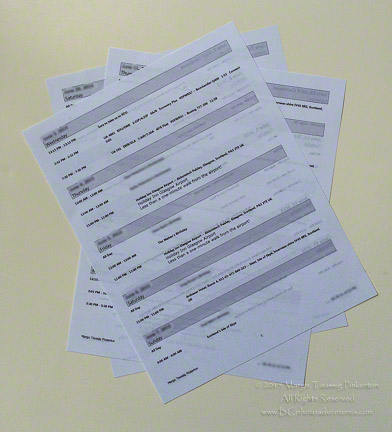 Where to put them:
Where to put them:
- Put one in your carry-on luggage, but not in the same bag as your passport;
- Carry one on your person;
- Leave one at home with a trusted family member or friend who can be easily contacted, i.e., don’t give it to someone who travels as much as you; and
- Put a PDF copy on your smart phone or tablet, if you have one and are bringing it/them.
Packing Clothing
With shrinking weight limits, it is wise to look at your suitcase, duffel bag, and backpack or briefcase. There are newer, lightweight-yet-strong materials that you might consider. When you are traveling, less weight is easier on you, whether on your back or shoulder, or towed beside or behind you. There are times when the escalator does not work or there are no elevators. Keep that in mind, especially for travel outside the United States.
There is an old adage, “Take half the clothes and twice the money.” Most people pack too many clothes, clothes that never leave the suitcase.
Benita, another BCPA alumna admitted, “I tend to be an over packer (clothes & gear) but I’ve gotten better. I enjoy my adventure much better when not loaded down.” So true!
Look for lightweight, wrinkle-resistant clothing that you can mix and match for different looks each day. Anybody who knows me knows that Arnie did not marry a fashionista. That said, I do like to be clean and look presentable.
Drip-dry clothing works well. Anything that can be layered for warmth without creating bulk works well.
I pack a bungee-cord-type clothes line that I can hook in the shower, across a narrow terrace, between two chairs, etc., so we can do laundry on the road. Rather than pack laundry soap, I pack Prell, good-old, plain-Jane Prell. No additives. If you get a stain, Prell most likely will get it out, and a little bit goes a long way in the sink, my washing machine of choice while traveling.
Some hotels have laundry service, and that is great. Check first, as the cost may be well worth it for you. Sometimes, one has the time to find and cope with a laundromat. We rarely do, and hardly ever overseas. So for us, it’s Prell and the sink.
Ziploc bags or the like … never leave home without them. I use small, cheaper-cheaper quality sandwich bags to sort what jewelry I bring. Quart-sized ones can be filled with toiletries, medications, and over-the-counter items. Check with the country/ies to which you will be traveling, as some require that prescriptions travel in their original container. If that is the case, have your pharmacist give you a smaller container that will hold what you need for your trip plus some extras in case of delays. I like to add another week’s worth for safety.
Net bags can be used in place of a dob kit.
Some people use a washcloth. I do and put one in a Ziploc bag, since many foreign hotels do not supply them.
Hangers are something that are often in short supply on the road. I bring a few lightweight ones, not only for drying clothes, but for keeping somewhat wrinkle free when we stop at a hotel or inn.
For those ladies who do their own nails, there are packets of nail polish remover so you don’t need to carry the liquid version that is bound to leak.
Packing Photo Gear
Tripods are critical to our photography. We remove the ball heads and pack the tripods themselves in the checked bag(s). There are smaller, lighter tripods, but unless they truly support your camera and heaviest lens, you might as well not bother. Better to bring a sturdy monopod with your trusty ball head. As Arnie says, if you flick one tripod leg and the others vibrate, your tripod is not a good one. Ultimately, better to raise your ISO than work with a substandard tripod.
Photo equipment is a personal choice. There is a photographer’s axiom that whatever lens you don’t bring or have is the one you want and need. That said, one has to be practical. Before your trip, try photographing a day or two with a certain, pared-down combination and see how it goes. If that doesn’t work, try another combination. Your test locations should be the same in each case and should include landscapes, cityscapes, low-light situations, and close-ups. My late mentor, Ernst Haas, said, “Use your feet to zoom in or out, because the less you carry, the more you will see. And the more you see the more photographs you’ll make.”
Some people are traveling with photo vests to distribute the weight on their bodies rather than in a case that might be weighed and found too heavy. Personally, I would rather carry just one body and athe equivalent of a 24-70 zoom lens.
Different countries have different plugs. These days, there are some great adapters that are not the heavy behemoths of years past. First, however, you need to check on the parameters for the country/ies you are visiting. We have several useful links on our Resources List page. Just scroll down to Electricity Here and Abroad. Then run a search and see what makes sense for you depending upon your frequency and variety of travel.
Cell Phones
Different carriers have different options. Check them out carefully and weigh them against buying a cell phone in your destination country. Another choice is to buy a refillable phone card, used much as a credit card. You pay up front and replenish when needed.
Credit Cards
Many of us think that credit cards are the easy way to go — and in many ways, they are — but beware, as many charge double fees overseas. One fee for a foreign charge plus another conversion fee. One credit card company that is perennially touted for not doing this is Capital One (Visa). Also know that in many countries, American Express is not widely accepted. We have found Visa to be the most widely accepted card.
Just about every airport these days has an exchange bureau to convert your currency into the local one, but beware of such bureaus that recomment youc arry some cash and some in what I tghink they call a “world card” or some such. While they claim these are accepted everywhere, they are not, as some of our people found recently in Morocco. Double check with your destination airport to make sure. ATM’s work in many places, but make sure you have a chip in your card. If not, get a replacement card with a chip in it. And while the credit casrd company say you don’t need to, I always call ahead and let them know in which country I will be in and when.
Your local bank can often change currency for you with some advance notice. If you are a member of AAA, they may be able to help you.
However you get your local currency, it is always a good idea to have some on hand for tips, meals, and emergencies.
Now, sit back, and enjoy planning your next trip.
Part 2 on Getting There and Back & Transportation
If you enjoy our blog(s) …
Please SUBSCRIBE. It’s easy to do by clicking on the appropriate link at the top of the right column.
Comments on the blog are always encouraged and welcome.
We also hope you will LIKE this and SHARE this blog with those interested in photography by clicking on the buttons below. We also hope you will check out these links:
When I asked if you had any hints on your blog for travelling, I didn’t expect such detail, but knowing you a little bit, I should have known. Part one is outstanding. I have not been a traveler but am looking forward to becoming one. This will certainly ease some anxieties. I will certainly return to this as my guide. Thanks a million!!
Ron, as you said, we try not to do anything half way! I am so glad that you found it worthy, and it will definitely help you in future travels.
Thank you for your comments!
Take care,
TBC
Sent to my Newton Camera Club (“WHERE PHOTOGRAPHERS CLICK”)
As some of you know, I went on a Barefoot Contessa Photo Adventures workshop in October…my first real photography foray! It seemed like an expensive thing to do until I realized (even months later) what an exceptional value it is with this company. Their blogs are chock-a-block FULL of ideas and experience-gained tips from a lifetime of being photojournalists and commercial photographers par excell-ahnce! (see the first three installments of their Travel Tips currently on their blog at https://www.BCphotoadventures.com/blog/2015/05/30/travel-tips-redux-preparation/). Their warmth and humor-filled guidance provided a VERY meaningful experience for this newbie to dSLR photography. By the way, I actually improved my ability to MAKE images and hope to sign up again SOON! PS: They have March openings on their Cuba Trips (at least one of them!) Bonnie Greenberg
Bonnie,
Thank you for the accolades! We always appreciate kind words from our alumnae/i. For those who are interested in the Cuba tour, March 4-11, we are at the 11th, closing hour, so a decision will have to be made quickly before our extra rooms and charter air seats are released.
Take care, and thanks again,
TBC
These are great reminders. We’ve learned the hard way that with a tight connection, we just might make the flight but our luggage won’t, so I always choose an itinerary with well over an hour between flights. And those of us on Medicare definitely need to get travel insurance if we leave the country–Medicare won’t cover you abroad. Something else we do for long-haul trips is to pay for a more expensive coach seat and then use miles (saved up from credit card purchases as well as from actual flights) to upgrade to business class. It makes crossing the pond so much more comfortable, and you have lounge access for free!
Mary,
Thanks for writing. All good tips!
Take care,
TBC
Fabulous ideas for travel tips! Thank you! I’m going to buy Prell as we speak! On my way Feb 16 to volunteer in Israel on an army base. Should get some neat pix. I think of you DAILY as I shoot daily and I may even be improving in some areas! Goal: for Larry and I to both join you and Arnie on a BCPA trip one day! Have a great time in CUBA!! Love, Bonnie
Bonnie,
So great to hear from you! I’m glad the article produced some tips for you. Have a wonderful trip to Israel, and we look forward to meeting Larry one of these days.
Meanwhile, take care, and a BIG hug!
TBC
Wow..this is just part one. I can’t wait for part two. As always, your information is timely and so so relevant. I have started to make my lists for my summer workshops. I tend to be an over packer (clothes & gear) but I’ve gotten better. I enjoy my adventure much better when not loaded down. There are so many things to consider whether traveling domestically or internationally. Thank you!
Benita,
Since you provided the main inspiration for this blog series, I am delighted that you were the first to comment. Thank YOU! Remember, HALF the clothes!
Take care,
TBC